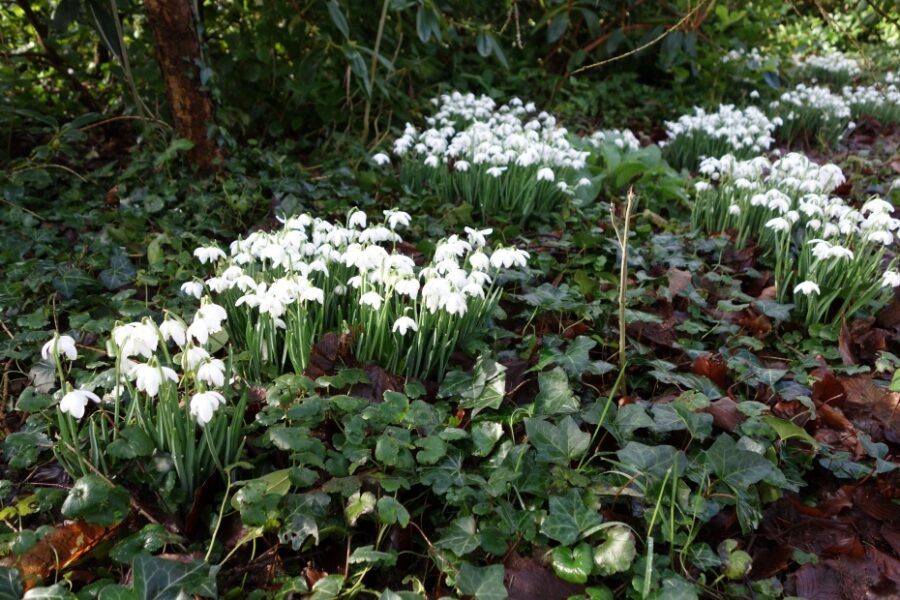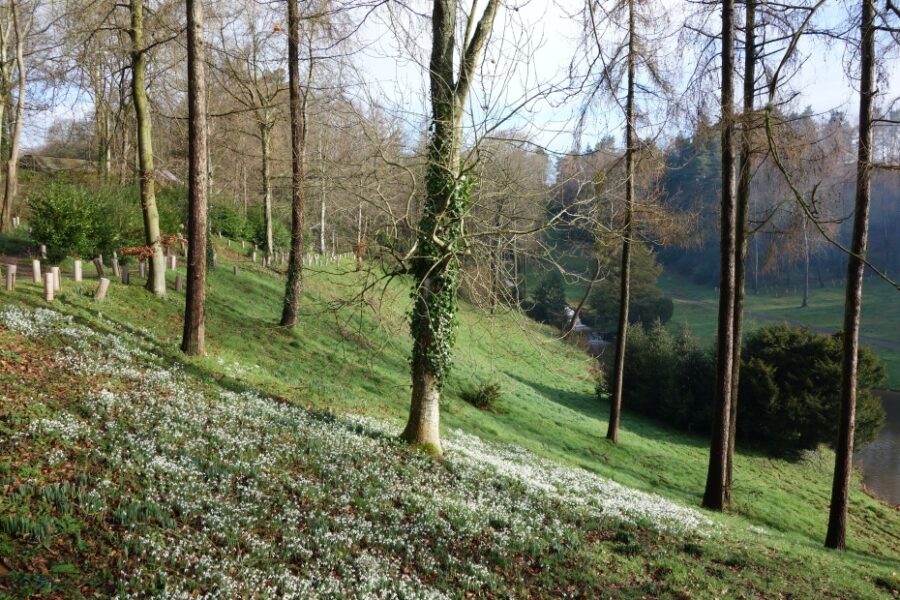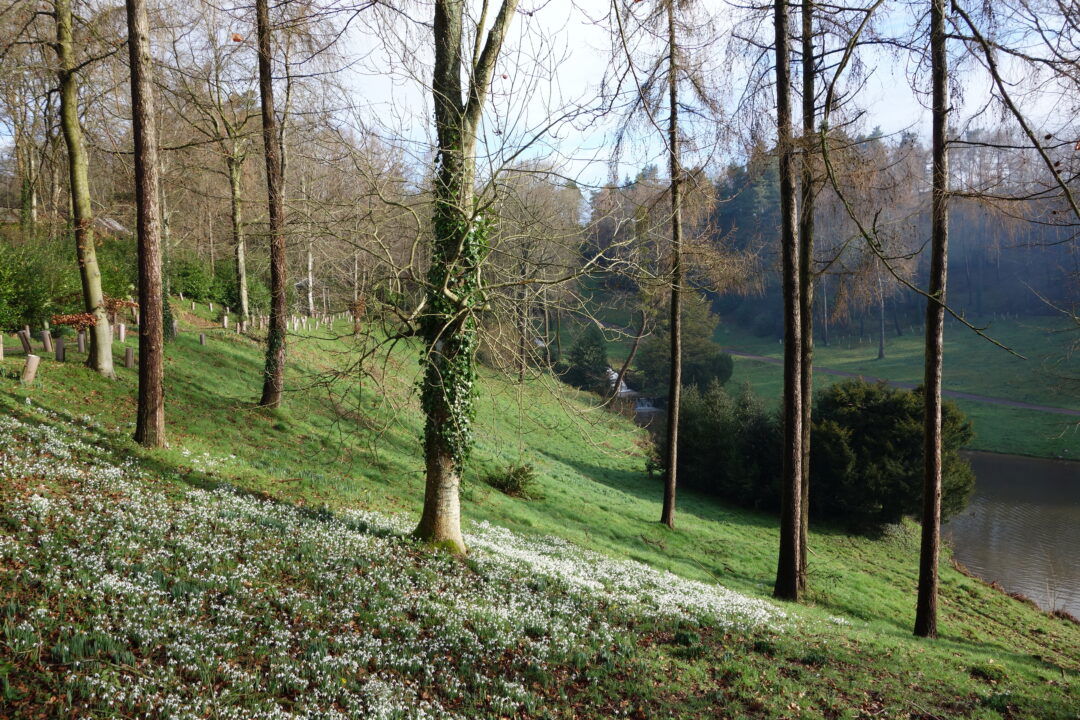Notice
Hestercombe will be closed all day on Tuesday, December 16th, while the National Grid completes local high-voltage work across the estate. Sorry for any inconvenience this may cause.
Head Gardener, Claire Greenslade, on Snowdrops, the impressive display that we have at Rook Wood from late December to March, as well as the history and some fun facts surrounding the plant.
Hestercombe will be closed all day on Tuesday, December 16th, while the National Grid completes local high-voltage work across the estate. Sorry for any inconvenience this may cause.
'AND THUS THE SNOWDROP,
LIKE THE BOW THAT SPANS THE CLOUDY SKY,
BECOMES A SYMBOL WHENCE WE KNOW THAT BRIGHTER DAYS ARE NIGH'
(A passage from 'The origin of the snowdrop'- a poem by George Wilson)
This sums up how most of us feel about the first sightings of snowdrops. The first sign that winter is drawing to an end, and to a gardener a whisper of hope for all the floral fun to come.
We have grown to think of Snowdrops as native plants but they actually come from central Europe and the Middle East. They were first noted as an ornamental plant in the UK in the 16th century, and by the 18th century they had been recorded in the wild. Now we are lucky enough to see them in carpets across valleys, ditches and edges of woodland. At Hestercombe, the valley of the landscape garden is carpeted in them. About 12 years ago we planted 50,000 snowdrops in Rook Wood and there is a really impressive display there now from late December to March.

The horticultural word for Snowdrop is Galanthus which comes from the Greek, Gala, meaning milk, and anthos, meaning flower- referring to the colour of the flower.
People that collect snowdrop varieties are called Galanthaphiles. This term was started in the 1800's as plant breeders began to hybridise 'wild' bulbs.
Our own Gertrude Jekyll spent time with plant breeder and garden writer E.A Bowles and visited him at Myddelton House to see his collections. He was a prolific plant breeder and gave his name to over 40 varieties of plants. Some that you may have heard of include Erysimum 'Bowles' Mauve', Muscari 'Bowles' Peacock', and Galanthus 'E.A.Bowles'. Somerset even had its own local Galanthaphiles.
The term galanthaphile was used in 1892 in reference to James Allen who was a plantsman, garden writer and pioneer in plant hybridisation, from Shepton Mallet. Known as the 'Snowdrop King' James Allen was self taught. In the 19th century there were thought to be 500 varieties of snowdrop, and 100 of them had been bred by James Allen. Shepton Snowdrops is a CIC (Community Interest Company) run by volunteers to help Shepton Mallet celebrate the life of James Allen, or more importantly to celebrate his love of snowdrops.
Also described as a Galanthaphile is Margery Fish who lived and built the garden at East Lambrook Manor. Margery loved green flowers and was especially keen on green marked snowdrops. Her garden now has an estimated 160 varieties of snowdrop within its two acres. The new owners celebrate with a Festival of Snowdrops and it is definitely worth visiting on open days to view them along the sides of the stream that runs through the garden. It's also worth seeing the 80 varieties for sale in the plant centre.
Human obsession with plants is really quite remarkable and the term Galanthomania was formed because of the lengths that collectors would go to get more bulbs. At flower shows security guards have been employed to guard them. The most expensive sale of a single snowdrop bulb to date is £1850 (plus £5 P and P!) for Galanthus 'Golden Tears'- isn't that incredible! Somerset nursery, Avon Bulbs, has a fantastic selection of snowdrop bulbs for sale, most at a slightly more reasonable price, and our own plant sales sell potted bulbs in December and January.

So get your warm clothing and wellies on and come for a stroll at Hestercombe to see the valley full of snowdrops- and maybe treat yourself to a hot chocolate afterwards too!
